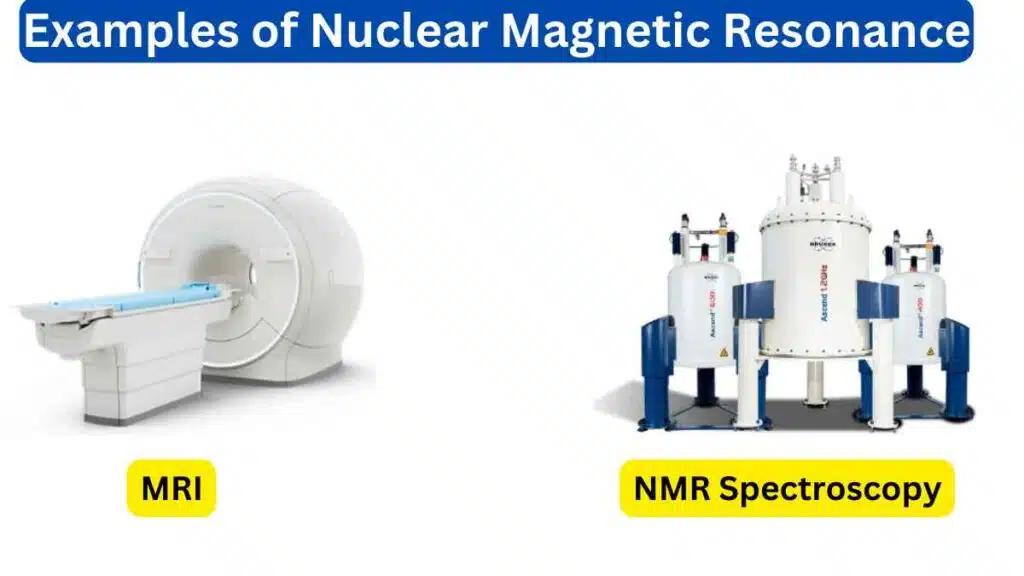10 Examples of Nuclear Magnetic Resonance
Nuclear magnetic resonance (NMR) is a powerful analytical technique used to study the properties of molecules. It works by exploiting the magnetic properties of certain atomic nuclei to provide valuable information about molecular structure, dynamics, and interactions.
Examples of Nuclear Magnetic Resonance
Here are 10 most common examples of nuclear magnetic resonance.

1. Chemical Analysis
NMR spectroscopy is extensively used in chemistry to determine the structure and composition of organic compounds. It helps chemists identify unknown substances, study reaction mechanisms, and confirm the purity of synthesized compounds.
2. Medicine and Healthcare
In medicine, NMR is employed for medical imaging techniques like Magnetic Resonance Imaging (MRI). It allows for non-invasive visualization of internal body structures, aiding in the diagnosis and monitoring of diseases.
3. Pharmaceutical Research
Pharmaceutical companies use NMR to analyze drug compounds, ensuring their purity and confirming their chemical structure. It is crucial in the development and quality control of medications.
4. Proteomics
NMR spectroscopy plays a vital role in studying the structure and interactions of proteins. Researchers use it to unravel the three-dimensional structures of proteins, helping in drug design and understanding biological processes.
5. Materials Science
NMR assists in characterizing materials at the atomic and molecular levels. It’s used to investigate the properties of polymers, catalysts, and other materials, aiding in the development of advanced materials.
6. Environmental Science
NMR is utilized in ecological studies to analyze soil, water, and air samples. It helps identify pollutants, study their effects, and develop strategies for environmental conservation.
7. Food Science
Food scientists employ NMR to analyze food composition, including fats, proteins, and carbohydrates. This information is crucial for quality control and nutritional analysis.
8. Geology
In geology, NMR assists in studying rock formations and characterizing underground reservoirs, aiding in oil exploration and resource management.
9. Biotechnology
NMR is used to study the structure and dynamics of biomolecules, such as DNA and RNA. This knowledge is vital for advancing biotechnological applications like gene therapy and genetic engineering.
10. Forensic Science
Forensic experts use NMR to analyze trace evidence, such as drugs, explosives, and bodily fluids, helping to solve crimes and provide crucial evidence in legal cases.







Leave a Reply